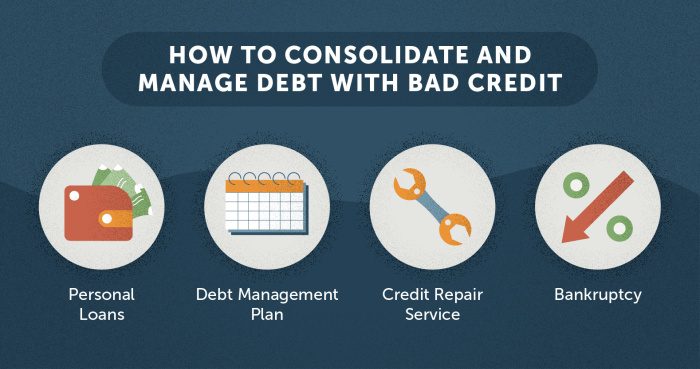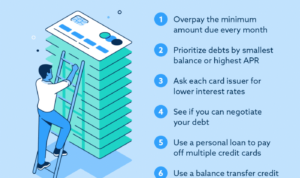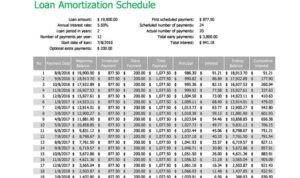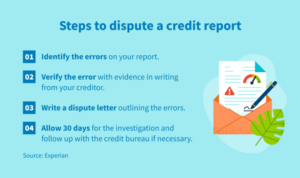Ready to tackle your credit card debt head-on? In this guide on how to consolidate credit card debt, we’ll break down the process, options, and tips to help you take control of your finances like a boss.
Whether you’re drowning in multiple credit card payments or just looking for a smarter way to manage your debt, consolidation could be the key to financial freedom. Let’s dive in!
Understanding Credit Card Debt Consolidation
Credit card debt consolidation is the process of combining multiple credit card balances into a single loan or credit card with a lower interest rate. This can help simplify your payments and potentially save you money in the long run.
Benefits of Consolidating Credit Card Debt
- Lower Interest Rates: Consolidating your credit card debt can help you secure a lower interest rate, reducing the overall amount you’ll pay over time.
- Single Monthly Payment: By consolidating your debts, you can streamline your payments into one monthly installment, making it easier to manage your finances.
- Improved Credit Score: If you make regular, on-time payments on your consolidated debt, it can positively impact your credit score over time.
Methods of Consolidating Credit Card Debt
- Balance Transfer: Transferring high-interest credit card balances to a new card with a lower interest rate can help save money on interest payments.
- Debt Consolidation Loan: Taking out a personal loan to pay off your credit card debt can provide a fixed repayment schedule and potentially lower interest rates.
- Home Equity Loan: Using the equity in your home to consolidate credit card debt can offer lower interest rates, but it puts your home at risk if you can’t make payments.
Types of Credit Card Debt Consolidation
When it comes to consolidating credit card debt, there are several options available to help individuals manage their finances more effectively. Let’s explore the different types of consolidation methods and how they work.
Debt Consolidation Loans
Debt consolidation loans involve taking out a new loan to pay off existing debts. This allows individuals to combine multiple debts into one single loan with a fixed interest rate and monthly payment. It can help simplify the repayment process and potentially lower the overall interest rate.
Balance Transfer Cards
Balance transfer cards allow individuals to transfer high-interest credit card balances to a new card with a lower or 0% introductory interest rate for a certain period. This can help save money on interest charges and pay off debt faster. However, it’s important to watch out for balance transfer fees and make sure to pay off the balance before the introductory period ends.
Debt Management Plans
Debt management plans involve working with a credit counseling agency to negotiate lower interest rates and monthly payments with creditors. The agency helps create a repayment plan based on the individual’s financial situation and facilitates payments to creditors. While this can be a helpful way to get control of debt, it’s essential to choose a reputable agency and stick to the agreed-upon plan to successfully pay off the debt.
Steps to Consolidate Credit Card Debt

Consolidating credit card debt can be a smart move to simplify your finances and potentially lower your interest rates. Here is a step-by-step guide on how to consolidate credit card debt effectively.
Gather Necessary Documents and Information
Before starting the consolidation process, make sure you have the following documents and information ready:
- Details of all your outstanding credit card balances
- Credit card statements
- Income verification documents
- Information about any other debts you have
Explore Consolidation Options
There are several ways to consolidate credit card debt, such as:
- Balance transfer credit card
- Debt consolidation loan
- Home equity loan or line of credit
Compare Interest Rates and Terms
Before choosing a consolidation method, compare interest rates, repayment terms, and fees associated with each option. Make sure you understand the total cost of consolidating your debt.
Create a Repayment Plan
Once you’ve selected a consolidation method, create a detailed repayment plan. Set a budget, prioritize your payments, and make sure you can afford the new monthly payment.
Avoid Common Pitfalls
During the consolidation process, be mindful of these common pitfalls:
- Continuing to use credit cards and adding more debt
- Missing payments on your new consolidation loan or credit card
- Not addressing the root cause of your debt
Pros and Cons of Credit Card Debt Consolidation
When it comes to credit card debt consolidation, there are both advantages and potential drawbacks to consider. Understanding these pros and cons can help you make an informed decision about whether consolidating your credit card debt is the right choice for you.
Advantages of Credit Card Debt Consolidation
- Lower Interest Rates: Consolidating your credit card debt can potentially lower your overall interest rate, saving you money in the long run.
- Simplified Payments: With debt consolidation, you only have to make one payment each month, making it easier to manage your finances.
- Improved Credit Score: By consolidating your debt, you may be able to pay off your balances faster, which can positively impact your credit score.
- Fixed Repayment Schedule: Debt consolidation often comes with a fixed repayment schedule, helping you stay on track with your payments.
Potential Drawbacks of Credit Card Debt Consolidation
- Extended Repayment Period: While debt consolidation can lower your monthly payments, it may extend the time it takes to pay off your debt, resulting in paying more interest in the long term.
- Additional Fees: Some debt consolidation options may come with fees or costs associated with the process, so it’s essential to consider these additional expenses.
- Risk of Losing Collateral: If you opt for a secured debt consolidation loan, such as a home equity loan, you risk losing your collateral if you default on the loan.
Tips for Making the Most of Credit Card Debt Consolidation
- Create a Budget: Develop a budget to ensure you can afford your consolidated monthly payments and avoid accumulating more debt.
- Compare Options: Explore different debt consolidation methods, such as balance transfer credit cards, personal loans, or debt management programs, to find the best fit for your financial situation.
- Avoid New Debt: Once you consolidate your credit card debt, refrain from using your cards to prevent falling back into debt and undoing your progress.






